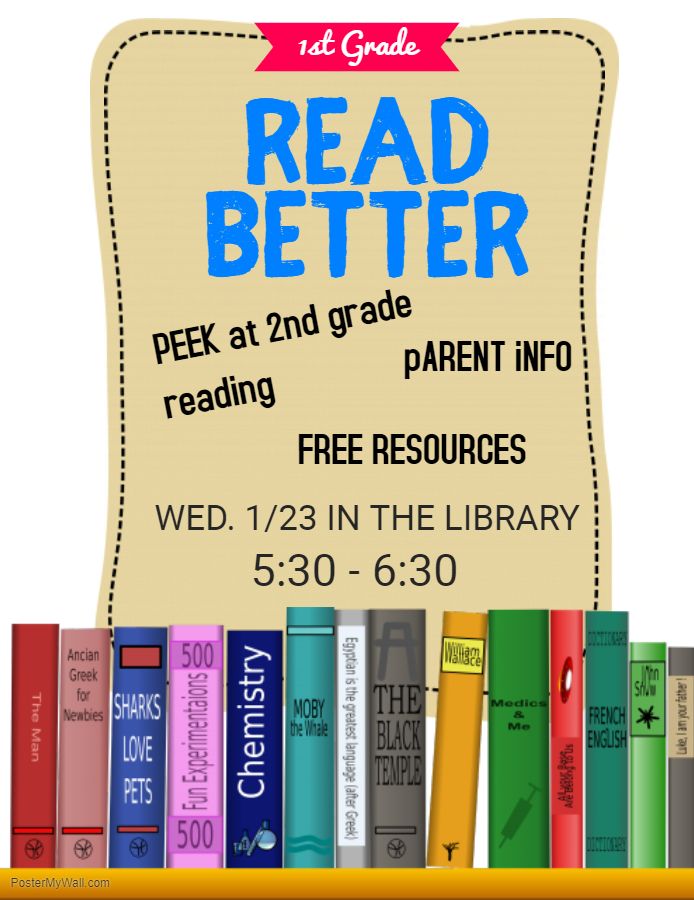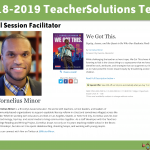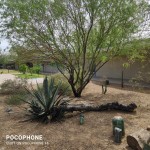January marks the second half of the school year and this time usually flies by quickly. My 1st graders are now demonstrating increased rigor, independence, and pride in academic growths. This has allowed me to have a more accurate assessment of where they are as scholars. More than half still need additional support in reading to help them reach their potential and prepare to transition to 2nd grade on level. In addition to classroom instruction, the home support home is the key ingredient needed to ensure they are successful.
It is my belief that all parents want their child to succeed AND they want to help them be successful. I also believe that parents are crucial members on the teaching team, and as such members, it is important that they are provided with professional development opportunities that are meaningful, impactful, and relevant. It is with these beliefs in mind that my elementary team (including our administrators and school librarian) developed our upcoming parent reading information night. Here is the structure and flow that we used in case you are thinking about doing something similar:
Step 1: Begin with the end in mind
We started by identifying our end goal: Parents need more effective home strategies for supporting their 1st grade students in reading. Our parents already know to go to the library, read 20 minutes per day, review site words, and listen to your child read. Parents also informed they have other family responsibilities, there are other assignments to be done, they get home late, and family time is limited. From this information, we understood that parents needed strategies that would give more bang for the buck.
Our professional development goals were:
Why: Reading is crucial for students to rise to their highest potential.
What: We will explore the elements of reading, assessment tools, and grade level samples.
How: We will give parents reading strategies and materials to use at home.
Step 2: Be clear on the “Why?”
Our parents know and believe that reading is important. They know the financial and social benefits that are attached to reading. So why should parents who believe that reading is important come to this professional development about why reading is important? As educators in the classroom, we have a perspective that parents do not understand. My team even more so because in a Montessori setting, we have our students from grades 1-3. Therefore, we see the continuum of the standards and curriculum as the students progress. First grade parents most likely do not. They typically see a child that can probably read better than others their age, and in response, may not see the urgency to advance in reading as we do. To address this, we clearly communicated the effect of reading skills in the classroom and its connection to academic rigor. We also shed light on our district assessments for grades 1 – 3, their progression, components, and cut scores on a national average. This communication included:
- an overview of the components of reading (Phonemic awareness,Phonics, Reading fluency, Vocabulary development, and Reading comprehension strategies)
- similar assessment samples (do not use secured materials)
- their child’s scores and data with guided interpretation
It was also important that parents understood that our state Move On When Reading law was only one reason for students to gain proficiency in reading. The more immediate reasons for our Montessori environment included:
- independent reading skills aid freedom to explore and make enriching academic choices
- fluent reading skills support academic rigor
- strong reading skills are a bridge to deeper comprehension
Step 3: Be clear on the “How?”
While purposefully identified specific models, information, and strategies that will help parents better support their students, my team kept in mind past communications and that the strategies needed to be quick, purposeful, and easy. Therefore, we had to throw out our old “go toos” and do the research. We were able to identify new ways for parents to use flashcards for site word and vocabulary.
We also incorporated meaningful activities and resources such as:
- how to conduct a one minute reading assessment
- a model video on prereading with your child how to your child to read
- a model video on how to support your child while reading
- a model video on how to support your child after reading
- reading correlation charts
- leveled readers to take home
Step 4: Anticipate how to make the PD most effective.
Once we were clear on our end goal, how and why, my team moved on to identify possible barriers and needs of the audience. This included anticipated questions and included them in the presentation to. We built in time for parents to jot their notes and follow up questions for teachers. We inserted activities and videos as opportunities for movement and engagement. Out 1st grade students designed personal reading folders for their parents to receive on that night. In addition to this, we planned the event for a time that coincided with the most recent data collection. It was scheduled at a time where parents would most naturally be coming to campus. Packets and resources were prepared before the event and the PowerPoint was made available to parents for future reference.
Our reading information night is scheduled for this week. While I will not know the effects of this event, it has added to my professional development as a teacher. If needed for upcoming 1st graders, it will be held earlier in the year (probably in September), then referenced throughout the year through homework, classwork, and conferences. It will also be adapted to the needs of 2nd and 3rd graders as needed.










Comments 2
Do you have a good record of parent participation? As a high school teacher the responses I get are limited (8/28 parents responded to a survey I sent 3 weeks ago). I am planning on sending an essay home for students to get feedback on, but I’m worried it will be detrimental for my students who don’t feel like they have adult support.
Hello! We held this event lat night. I have 14 first graders. 12 showed up with parents and one family simply had too many conflicts. There were also 12 families present from other classes that were invited by word of mouth or recommendation from their teacher. For my class, I had the students decorate their folders and write parent thank you letters as a gift to be received when the familiies arrived. Parents also knew I would be addressing many of their current questions, needs, and frustrations so I think they wanted to come for these reasons. Standing on the assumptions that parents really do want to support their kids, I would suggest the following for older students: 1) Get them involved in the event as much as possible from development to presentation. 2) Make sure what you are offeriing is going to be of unique interest for the parents and not just what they heard before. 3) Consider the optimal time and place 4) Consider videoing and release it later so parents that can not be there can still participate and include a way for them to give their feedback. 5) Make personal contact with the parents as much as possible. With HS that can be had but using technology for virtual face to cafe with parents might help.